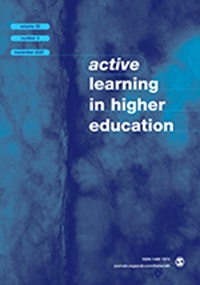Understanding cognitive engagement in virtual discussion boards
IF 3.8
1区 教育学
Q1 EDUCATION & EDUCATIONAL RESEARCH
引用次数: 0
Abstract
Cognitive engagement is an essential component in student learning. With the increase of more asynchronous virtual educational tools in classrooms, there is a need to understand how students are engaging with classroom content in these formats. Several studies have examined student and teacher perceptions of cognitive engagement in virtual discussion boards, but prior research has not analyzed the responses themselves. This study explores higher education students’ cognitive engagement when posting to asynchronous online discussions, investigating the levels and types of engagement for both written and video responses. Student responses were qualitatively coded based on themes that aligned with the ICAP framework of cognitive engagement. Descriptive and quantitative analyses were used to understand the types of cognitive engagement observed in online discussions, differences in video and written posts or when they had a choice in how to respond, and if patterns existed throughout the course. Results suggest that students do show deep levels of cognitive engagement in asynchronous discussions, in both written and video posts. Students exhibited deeper levels of cognitive engagement when they were given the choice in how to respond. There were no patterns over time in the course in cognitive engagement within students across the written and video posts. The structure and instructions of the prompts themselves may be important for eliciting deeper levels of responses. More explicit prompting for students to engage in deeper reflections or abstract thinking may help students engage with course content at a deeper level.了解虚拟讨论板中的认知参与
认知参与是学生学习的重要组成部分。随着越来越多的异步虚拟教育工具应用于课堂,我们有必要了解学生是如何以这些形式参与课堂内容的。有几项研究考察了学生和教师对虚拟讨论板中认知参与的看法,但之前的研究并未对学生的回答本身进行分析。本研究探讨了高等教育学生在异步在线讨论中发帖时的认知参与情况,调查了书面和视频回复的参与水平和类型。根据与认知参与的 ICAP 框架相一致的主题,对学生的回复进行了定性编码。描述性分析和定量分析用于了解在线讨论中观察到的认知参与类型、视频和书面帖子中的差异或当他们可以选择如何回复时的差异,以及整个课程中是否存在模式。结果表明,在异步讨论中,学生在书面和视频帖子中都表现出了较高的认知参与水平。当学生可以选择如何回应时,他们的认知参与程度更高。随着时间的推移,学生在书面和视频帖子中的认知参与度并没有规律可循。提示本身的结构和说明对于激发更深层次的回应可能很重要。更明确地提示学生进行更深层次的思考或抽象思维,可能有助于学生更深层次地参与课程内容。
本文章由计算机程序翻译,如有差异,请以英文原文为准。
求助全文
约1分钟内获得全文
求助全文
来源期刊

Active Learning in Higher Education
EDUCATION & EDUCATIONAL RESEARCH-
CiteScore
13.20
自引率
12.00%
发文量
31
期刊介绍:
Active Learning in Higher Education is an international, refereed publication for all those who teach and support learning in higher education (HE) and those who undertake or use research into effective learning, teaching and assessment in universities and colleges. The journal is devoted to publishing accounts of research covering all aspects of learning and teaching concerning adults in higher education. Non-discipline specific and non-context/country specific in nature, it comprises accounts of research across all areas of the curriculum; accounts which are relevant to faculty and others involved in learning and teaching in all disciplines, in all countries.
 求助内容:
求助内容: 应助结果提醒方式:
应助结果提醒方式:


